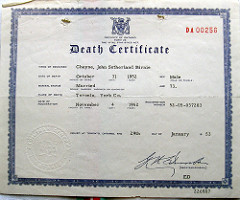When most American couples get pregnant their attentions immediately turn to the bundle of joy they are about to bring into the world. They worry whether they will be good parents and whether their child will be born healthy. They have financial worries. They nest. But they most likely do not consider leaving the hospital without the mother of the child in toe.
On a global scale, rates of maternal mortality rates have taken a sharp turn for the better. However, as the rest of the world makes improvements, maternal death rates have increased in the United States. According to the Institute of Health Metrics and Evaluation, American rates have increased by more than half since 1990. Among other rich nations, the United States is the only country to experience an increase in maternal birth rates. Unlike the maternal deaths of 19th century caused by eclampsia, this recent increase is associated with chronic medical conditions such as diabetes and obesity, especially among African American women. Additionally,women are giving birth at older ages. Although maternal deaths are hard to count, many experts claim that the deaths are indeed on the rise.
Maternal mortality hits very close to home, especially for one American family, the Buhanan-Deckers. Jared Buhanan-Decker, who shared his story on the podcast, Strangers, lost his wife to a rare condition called amniotic fluid embolism. This condition occurs when the amniotic fluid leaks into the blood stream of the mother and triggers a severe immune reaction in which oxygen is cut off to all non-vital organs. The uterus is considered a non-vital organ; therefore oxygen supply is cut off from the baby. In many cases, both mother and baby die. In Jared’s case, on the very same day his son was born his wife died. He claims his wife gave up her life for that of their child. Although, amniotic fluid embolism is an extremely rare condition that accounts for 7.5% to 10% of maternal deaths in the U.S., it is a reminder that women still die while giving life.
Maternal deaths show us how closely linked death and life are and how dangerous giving birth continues to be. Accompanied by great grief is great joy. While mourning the death of the child’s mother, the surviving parent must create an environment for a baby to flourish and grow. The surviving parent will someday have to explain to their child why and how his or her mother died. For Jared, when those questions arise, he plans to tell his son that it was not his fault that his mother died. If anything she chose to save him by sacrificing her own life. In making meaning of his wife’s death, Jared is able to come to turns with her death and mourn the future they would have shared together.
Maternal death may conjure images of women bleeding to death during childbirth in an unsanitary environment. But in reality, maternal death continues to be an issue in the sterile, equipped hospitals in the United States of America.
Sources:
Thau, L 2017, Wouldn’t it be Nice, audio podcast, Strangers, Radiotopia, PRX, 2 April. Available from http://www.storycentral.org/wouldnt-it-be-nice/#more-2126. [13 January 2017].
Tavernise, S, ‘Maternal Mortality Rate in U.S. Rise, Defying Global Trend, Study Finds’, New York Times, 21 September. Available from www.nytimes.com. [2 April 2017].


